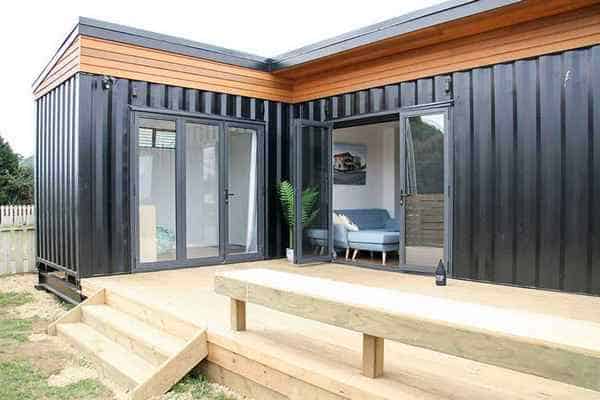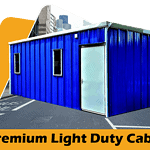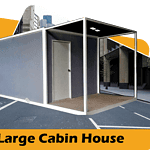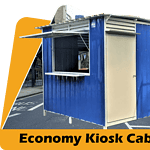
The Sustainability of Container Houses in Malaysia
Table of Contents
- Introduction
- Overview of Container Houses
- Environmental Benefits
- Reduced Environmental Impact
- Recycling and Upcycling
- Energy Efficiency
- Cost-Effectiveness
- Affordability
- Time Efficiency
- Return on Investment
- Adaptability and Flexibility
- Modular Design
- Mobility
- Temporary Housing Solutions
- Energy Efficiency
- Insulation
- Natural Lighting
- Renewable Energy Integration
- Design and Aesthetics
- Architectural Creativity
- Customization
- Interior and Exterior Finishes
- Challenges and Limitations
- Structural Modifications
- Thermal Regulation
- Building Regulations and Permits
- Community Acceptance and Education
- Changing Perceptions
- Showcasing Successful Projects
- Community Engagement
- Future Potential and Innovations
- Advancements in Sustainable Materials
- Smart and Green Technologies
- Integration with Eco-Friendly Infrastructure
- Conclusion
- FAQs
Introduction
Container houses have emerged as a sustainable and cost-effective housing solution, gaining popularity in Malaysia. This article explores the sustainability of container houses in the Malaysian context, focusing on their environmental benefits, cost-effectiveness, adaptability, energy efficiency, design aspects, challenges, community acceptance, future potential, and innovations.
1. Overview of Container Houses
Container houses are residential structures built using repurposed shipping containers. These containers, primarily made of steel, provide a sturdy framework for constructing homes. From single-story dwellings to multi-level structures, container houses offer a range of design possibilities.
2. Environmental Benefits
Reduced Environmental Impact
Container houses contribute to sustainability by repurposing existing materials. By utilizing decommissioned shipping containers, the demand for new construction materials is reduced, minimizing environmental impact and waste generation.
Recycling and Upcycling
Container houses promote recycling and upcycling practices by repurposing containers that would otherwise be discarded. This approach helps reduce the need for resource-intensive manufacturing processes involved in traditional construction materials.
Energy Efficiency
Container houses can be designed to maximize energy efficiency. Through proper insulation, ventilation systems, and integration of renewable energy sources such as solar panels, energy consumption can be significantly reduced. This leads to lower carbon footprints and decreased reliance on non-renewable energy sources.
3. Cost-Effectiveness
Affordability
Container houses offer a cost-effective housing solution in Malaysia. Compared to traditional construction methods, building with containers can be more affordable, considering lower material and labor costs associated with this construction approach.
Time Efficiency
Container houses can be built relatively quickly due to the pre-existing structural framework provided by shipping containers. This time efficiency translates into cost savings for homeowners and developers. Additionally, shorter construction periods mean reduced inconvenience for residents.
Return on Investment
Investing in a container house can yield favorable returns. As the demand for sustainable and affordable housing increases, the resale value of container houses is likely to appreciate, making them an attractive investment option.
4. Adaptability and Flexibility
Modular Design
Container houses are inherently modular, allowing for easy expansion or modification. Additional containers can be added to increase living space or repurposed for different functions, providing homeowners with flexibility and adaptability as their needs evolve.
Mobility
Container houses can be designed for mobility, enabling homeowners to relocate their dwellings if needed. This feature makes container houses an appealing option for individuals who value flexibility or have temporary housing requirements, such as those involved in construction projects or frequent relocation.
Temporary Housing Solutions
Container houses can serve as temporary housing solutions for various purposes. Whether it is providing accommodation during disaster relief efforts or supporting workforce housing needs, the adaptability of container houses allows for quick and efficient deployment.
5. Energy Efficiency
Insulation
Proper insulation is crucial for container houses to ensure energy efficiency and comfort. Special attention should be given to insulating the walls, roof, and floor to minimize heat transfer and maintain a suitable indoor environment.
Natural Lighting
Strategic placement of windows and skylights allows for ample natural lighting, reducing the need for artificial lighting during the day. This not only conserves energy but also creates a pleasant and inviting living environment.
Renewable Energy Integration
Container houses can be equipped with renewable energy systems, such as solar panels, to generate clean and sustainable power. This integration further reduces reliance on the grid and lowers energy costs over the long term.
6. Design and Aesthetics
Architectural Creativity
Container houses offer architects and designers the opportunity to showcase their creativity. With innovative design strategies, containers can be transformed into unique and visually appealing homes that challenge conventional architectural norms.
Customization
Container houses can be customized to suit individual preferences and lifestyle needs. From interior layouts to exterior finishes, homeowners have the freedom to personalize their living spaces while maintaining the structural integrity of the containers.
Interior and Exterior Finishes
Container houses can be finished with a wide range of materials, including eco-friendly and sustainable options. This allows homeowners to create aesthetically pleasing and comfortable living environments while aligning with their sustainability goals.
7. Challenges and Limitations
Structural Modifications
Modifying shipping containers for residential use may require cutting or removing sections of the original structure. These modifications should be done carefully to maintain the structural integrity of the container house and ensure its safety.
Thermal Regulation
Shipping containers are designed for cargo transport, not human habitation. Consequently, they tend to have poor thermal insulation properties. Additional insulation and proper ventilation systems are necessary to overcome this limitation and ensure comfortable living conditions.
Building Regulations and Permits
Constructing container houses in Malaysia requires adherence to building regulations and obtaining the necessary permits. These regulations ensure that container houses meet safety, structural, and environmental standards. Consulting with local authorities and professionals experienced in container house construction is crucial for compliance.
8. Community Acceptance and Education
Changing Perceptions
Container houses are still relatively new in Malaysia, and community acceptance may vary. Educating the public about the benefits and sustainability of container houses can help dispel misconceptions and foster greater acceptance and appreciation for this housing solution.
Showcasing Successful Projects
Highlighting successful container house projects can inspire and influence public opinion. When communities witness the positive outcomes and aesthetic appeal of well-designed container houses, their acceptance and interest in this alternative housing option may increase.
Community Engagement
Involving the community in the planning and development of container house projects can foster a sense of ownership and pride. Engaging residents through consultations and participatory processes can address concerns, build trust, and ensure the successful integration of container houses within communities.
9. Future Potential and Innovations
Advancements in Sustainable Materials
Continued research and development in sustainable materials hold the potential to enhance the environmental performance of container houses. The exploration of eco-friendly alternatives for insulation, finishes, and structural components can further improve the sustainability of these homes.
Smart and Green Technologies
Integrating smart technologies, such as energy-efficient appliances, home automation systems, and water-saving fixtures, can enhance the sustainability and comfort of container houses. These technologies contribute to reduced energy and resource consumption, promoting a greener lifestyle.
Integration with Eco-Friendly Infrastructure
Container houses can be part of a larger sustainable ecosystem by integrating with eco-friendly infrastructure. Incorporating features like rainwater harvesting systems, community gardens, and shared renewable energy facilities can enhance the sustainability and livability of container house communities.
Conclusion
Container houses present an exciting and sustainable housing option in Malaysia. Their environmental benefits, cost-effectiveness, adaptability, energy efficiency, and design possibilities make them a compelling choice for those seeking affordable and eco-friendly homes. While challenges exist, such as building regulations and community acceptance, container houses have the potential to revolutionize the housing industry and contribute to a greener and more sustainable future in Malaysia.
FAQs
- Are container houses as durable as traditional houses? Container houses are constructed using steel shipping containers, making them durable and sturdy. With proper maintenance, they can have a similar lifespan to traditional houses.
- Can container houses be expanded or modified in the future? Yes, container houses are inherently modular, allowing for easy expansion or modification. Additional containers can be added or repurposed to accommodate changing needs.
- Are container houses suitable for Malaysian weather conditions? With proper insulation and ventilation systems, container houses can be designed to withstand Malaysian weather conditions and provide a comfortable living environment.
- Are container houses more susceptible to fire hazards? Container houses can be designed with fire-resistant materials and proper safety measures. When built according to regulations, the risk of fire hazards can be minimized.
-
Can container houses be financed through traditional home loans? Financing options for container houses may vary among financial institutions. It is advisable to consult with lenders familiar with alternative housing options to explore financing possibilities.
Desain Rumah Kabin
Rumah Kabin Kontena
Harga Rumah Kabin
Kos Rumah Kontena
Rumah Kabin 2 Tingkat
Rumah Kabin Panas
Rumah Kabin Murah
Sewa Rumah Kabin
Heavy Duty Cabin
Light Duty Cabin












